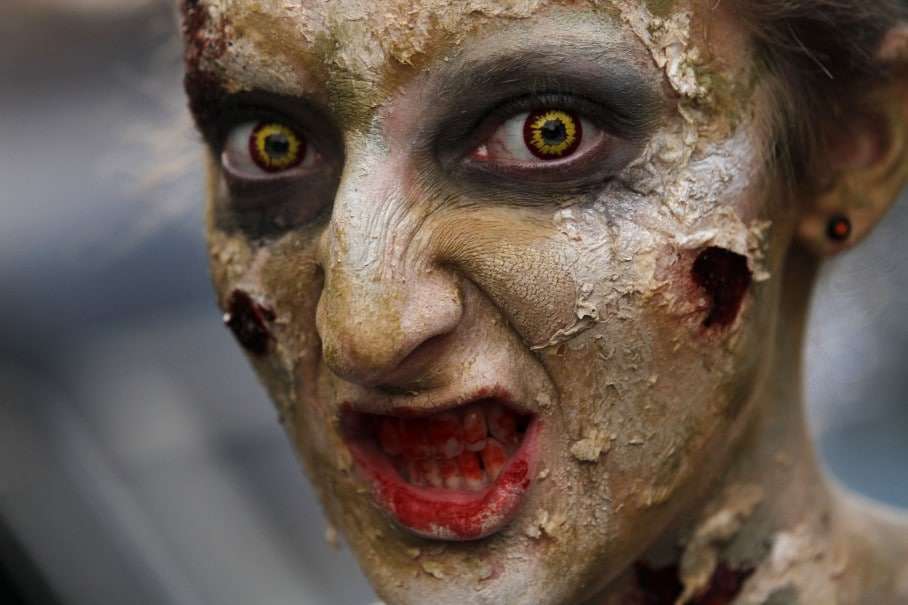The Volokh Conspiracy
Mostly law professors | Sometimes contrarian | Often libertarian | Always independent
Halloween law: Haunted house surprise leads customer to run away and fall [UPDATE: Now with bonus Screamatorium litigation action]

From Griffin v. Haunted Hotel, Inc. (Cal. Ct. App. published Nov. 20):
Scott Griffin purchased a ticket to experience The Haunted Trail, an outdoor haunted house type of attraction where actors jump out of dark spaces often inches away from patrons, holding prop knives, axes, chainsaws, or severed body parts. After passing what he believed was the exit and "giggling and laughing" with his friends about how much fun they had, Griffin unexpectedly was confronted by a final scare known as the "Carrie" effect - so named because, like the horror film Carrie, patrons are led to believe the attraction is over, only to be met by one more extreme fright. This was delivered by an actor wielding a gas powered chainsaw (the chain had been removed), who approached Griffin, frightened him, and gave chase when Griffin ran away. Griffin was injured when he fell while fleeing. Griffin sued The Haunted Hotel, Inc. …, which operates The Haunted Trail, alleging negligence and assault.
"Under the primary assumption of risk doctrine, there is no duty to eliminate or protect a plaintiff against risks that are inherent in a sport or [recreational] activity." … The risk that a patron will be frightened, run, and fall is inherent in the fundamental nature of a haunted house attraction like The Haunted Trail. Moreover, on this record there is no evidence creating a triable issue [that] Haunted Hotel unreasonably increased the risk of injury beyond those inherent risks or acted recklessly….
A basic part of the scares at The Haunted Trial is the startling, frightening, menacing and chasing of patrons by actors in ghoulish costumes, some carrying chainsaws with the chain removed. There is an inherent risk that a patron may decide to run and fall. Because there is no evidence that anyone associated with The Haunted Trail intentionally injured Griffin, and because being chased in the Carrie effect scene is neither reckless nor outside the range of ordinary activity involved in a scare attraction, the trial court properly determined that as a matter of law, Haunted Hotel breached no duty to Griffin.
Being chased within the physical confines of The Haunted Trail by a chainsaw carrying maniac is a fundamental part and inherent risk of this amusement. Griffin voluntarily paid money to experience it. "It is not the function of tort law to police such conduct."
Seems quite right to me.
UPDATE: For a similar recent decision from an Illinois trial court, Yaints v. Barclay (the Screamatorium case) (some paragraph breaks added):
Defendants Richard and Verda Barclay operate a number of different Halloween amusement attractions in Winnebago County. Fourteen year old Autwnn Yaints, the minor Plaintiff in this case, was a customer at one of those attractions on October 14, 2011, which she attended with several friends. Yaints had not previously attended such an attraction. The attraction at issue here was a building called the "Screamatorium."
In her deposition, Yaints described walking into the Screamatorium with her three friends. It took Yaints about two or three minutes to walk through the first two rooms of the attraction. Multiple characters in costume were moving in and out. At the two or three minute mark, Yaints was in a dark room illuminated only by "tiny lights hanging from the ceiling." She could see her friends walking in front of her.
A person in clown costume appeared and he turned on a chainsaw. This frightened Yaints, so she began running forward (continuing through the Screamatorium)…. At some point while [she was] running, … Yaints fell … [and] hurt her knee….
Had the facts as described occurred in a different setting, [they] might we11 be enough [for liability]. If, for example, a chainsaw wielding clown chased after a person shopping in a department store, we might have little difficulty in identifying that action as the prime mover in a chain of events leading to the customer's fall. It cannot be ignored, however, that the events here occurred in a Halloween "haunted" attraction. Dim lighting and chainsaw-wielding clowns are not only to be expected in such a venue; their absence would likely disappoint the customers….
Plaintiff cannot point to negligent conduct on the part of the Defendants other than that which is essentially inherent in the attraction she was there to see…. There is no factual basis in this record upon which the jury could find a negligent cause for Plaintiff's fall, so summary judgment is appropriate.


Show Comments (0)